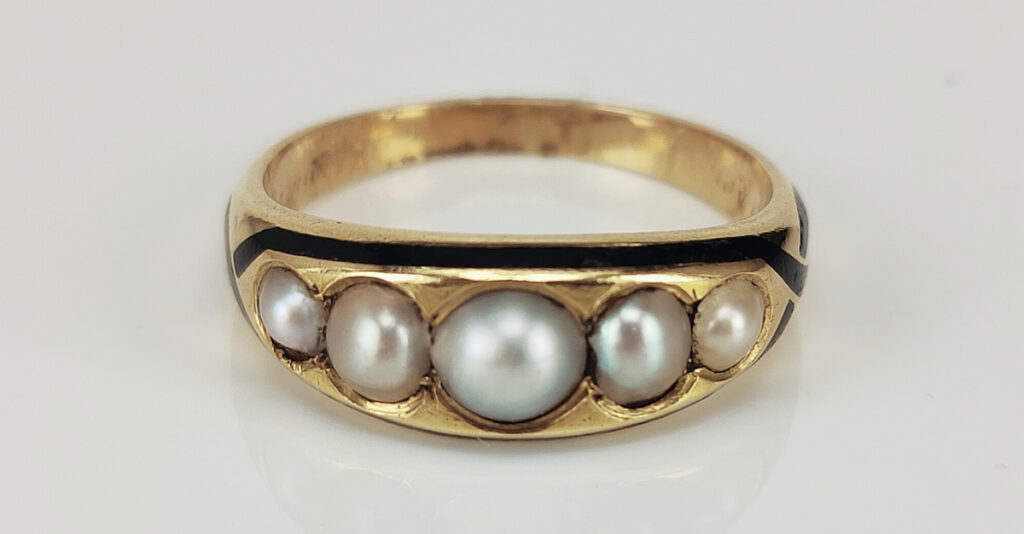1803 Mourning Ring for Mrs Marg. Mackenzie of Suddie
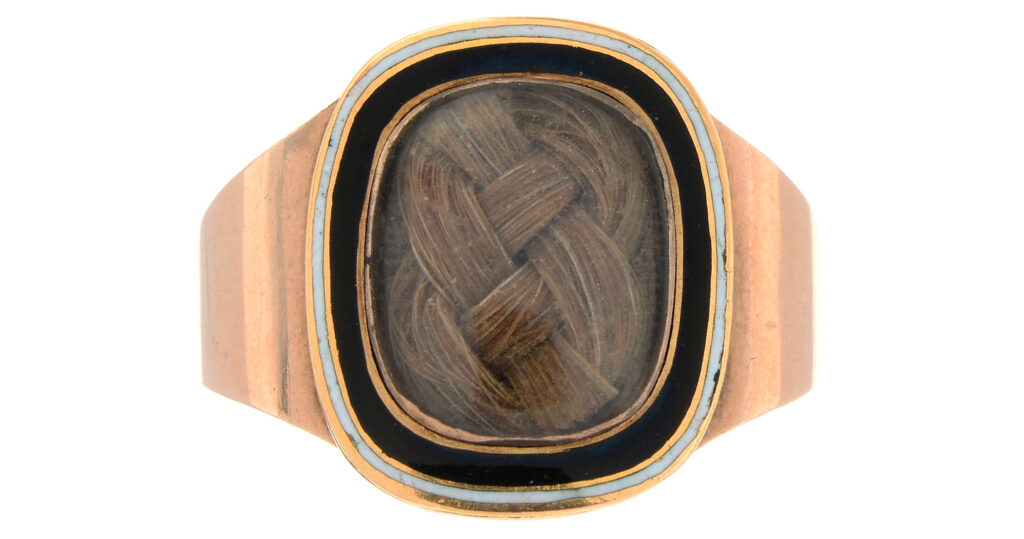
On the 23rd of October, 2024, Fellows Auctions UK offers this amazing mourning ring from the Joseph Bonnar Collection. The mourning ring is dedicated to ‘Mrs Marg. Mackenzie of Suddie, died 13th April 1803, aged 64’
“As a member of one of Scotland’s most powerful clans, Margaret’s life was closely linked to the broader story of the Mackenzies. The clan, whose motto “Luceo Non-Uro” (“I shine, not burn”) speaks to their resilience and strength, held sway over vast lands and played a key role in shaping the political landscape of the Highlands.”
Geometric shapes evolved from the oval and navette styles of the c.1780 period onwards. The larger styles with their pained scenarios on ivory were replaced with simple woven hair, set inside a glass bezel with an oval or rectangular shape. Mourning bands were the most common mourning ring given out at funerals for friends and family, while this style uses their same elements, but has her hair, which was for her close friends and family.
“Margaret Mackenzie’s contributions, though less documented than those of her male counterparts are no less significant. Her life is a reminder of the vital role women played in the management and preservation of Scotland’s aristocratic families. Her descendants continued to hold influence well into the 18th and 19th centuries, ensuring that the name Mackenzie of Suddie endured.”
“Margaret Mackenzie of Suddie may not be a household name, but her life is emblematic of the strength and resilience of Scottish women in the Highlands. Her story is a valuable reminder of the often-overlooked contributions of women in Scottish history, and her legacy, like that of her famous clan, continues to shine.”
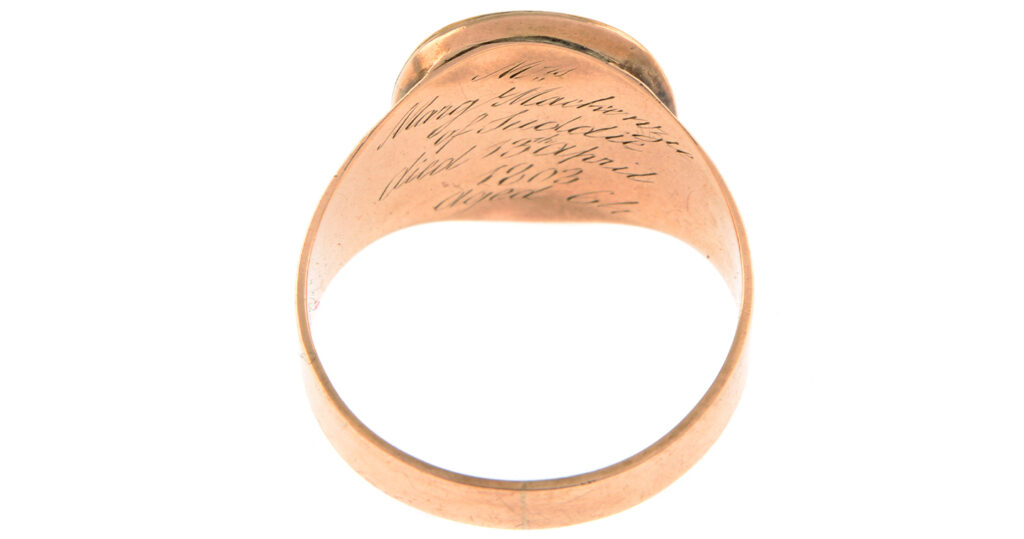
Mrs Marg. Mackenzie of Suddie’s mourning ring has more elements of design common with the early 19th century. The wide shoulders and band and the pronounced bezel with enamel were a simple and powerful way of displaying grief in a ring. Simple use of colour in the black and white enamel state the values of the person being mourned. Here, the black represents death and the absence of light and the white is a tribute to the purity of Mrs Marg. Mackenzie.
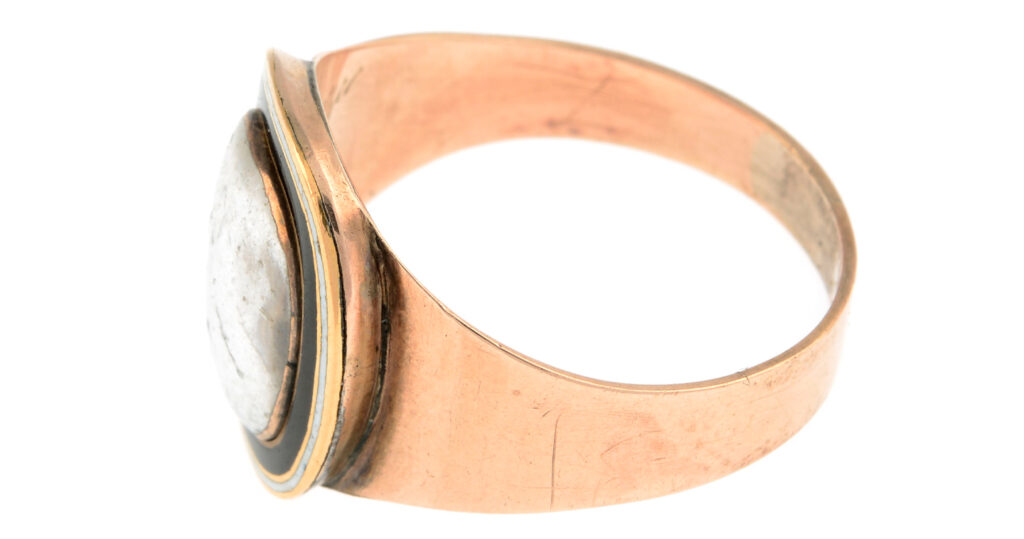
This view of Mrs Marg. Mackenzie of Suddie’s mourning ring shows good detail of the domed bezel. Often with mourning jewels, one can note the replacement of this, as the domed glass or crystal covering the woven hair have sharper facets, rather than being smoothed over.

The box this 1803 mourning ring sits in reads:
“Allison & Co / JEWELLERS ETC / GLASGOW.”
In 1899 advertisements Allison & Co use the statement ‘established for over half a century’, making this box perhaps not the original with the ring, but certainly an excellent part of its history. Connecting mourning jewels with their boxes is a testament to how these jewels were keepsakes for the family and handed down the generations, rather than worn.
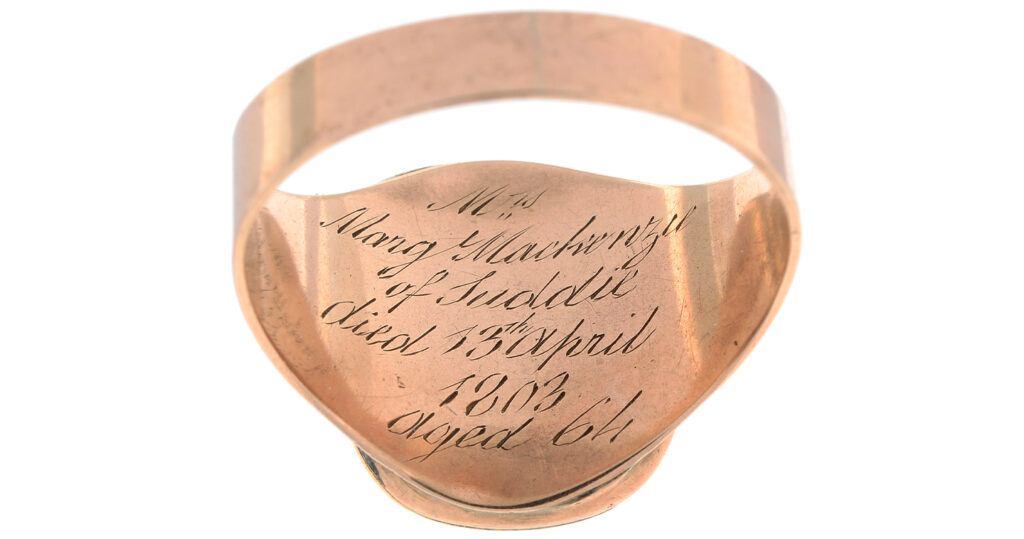
Dedications are the most special part of a mourning jewel. They tie all the visual design and elements of a piece into its intrinsic and personal message of the family into an epitaph that would otherwise be seen on a tombstone. These can be simple dedications or personalised messages between family and friends. Mrs Marg. Mackenzie of Suddie’s mourning ring is a simple message that states her life.






